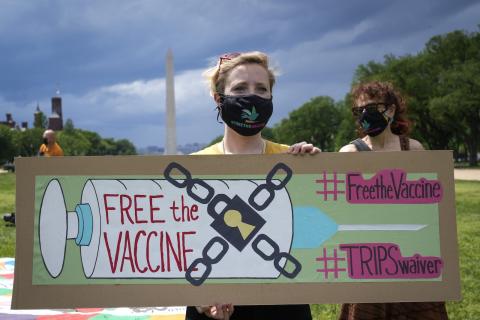Tentative signs the US may have been adopting a more sensible view on trade have been dashed by President Donald Trump’s recent decision to impose tariffs of 25% on steel imports and 10% on aluminium imports.
Hopes that Trump’s protectionist views were mellowing were kindled at Davos in January when he hinted that the US might consider rejoining the Trans-Pacific Partnership (TPP) trade agreement. In February, US Treasury Secretary Steve Mnuchin said the US had held talks with TPP members about what it would take for the US to rejoin the deal. This statement followed a letter to the President, signed by 25 Republican senators, urging the US to rejoin the trade agreement.
Another positive sign that the US may have been moving away from protectionist rhetoric was the annual Economic Report to the President, prepared by the Council of Economic Advisers. Released on 21 February, the report stated, “trade and economic growth are strongly and positively correlated”. Notwithstanding Trump’s scepticism about the World Trade Organization (WTO), the report also stated:
The United States gets better outcomes via formal WTO adjudication than negotiation, increasing the probability that the complaint will be resolved and decreasing the time it takes to remove the barrier in question.
Even on the North America Free Trade Agreement (NAFTA), which Trump described as “the worst trade deal ever made”, the Council of Economic Advisers said, “Studies suggest the existence of net positive gains from NAFTA for US GDP and employment”. As Matthew Goodman from the CSIS observed, there was hope that views on trade in the White House were evolving in a positive direction.
Yet Trump’s decision to place levies on steel and aluminium imports has squashed such expectations. In contrast to the pro-trade comments in the report from his Council of Economic Advisers, after imposing the tariff on steel and aluminium imports Trump tweeted:
When a country (USA) is losing many billions of dollars on trade with virtually every country it does business with, trade wars are good, and easy to win.
As one commentator later rightly observed:
There’s a lot to unpack in Trump’s tweet, but the overall message is pretty clear: The president doesn’t seem to have a full grasp of what’s going on here.
When Mnuchin said the US had begun talks with other countries about rejoining the TPP, Australia’s Trade Minister Steve Ciobo cautiously welcomed the news. His caution was wise because, even before Trump’s imposition of tariffs on steel and aluminium, it would have been a hard slog for the US to rejoin the TPP. After Trump’s announcement, the prospect is very unlikely under this administration.
As the largest market economy in the world, the US was the driving force behind the original TPP agreement. But following Trump’s decision to withdraw from it, and efforts of the remaining members to continue as “TPP-11”, the US is no longer in the driving seat in any negotiations. The remaining 11 members will have to agree to the US rejoining.
The qualification in Trump’s comments at Davos was that the TPP would have to be renegotiated, and the US achieve a “significantly better deal”. The irony is that the US drove the original TPP negotiations, pushing for provisions only reluctantly agreed to by many other members who would say the original TPP was a “good deal” for the US.
Following the US withdrawal from the TPP, the immediate reaction was that the agreement was dead. However, the eleven members remaining, led by Japan and with strong support by Australia, were able to keep most of the TPP agreement in place under a new name, the Progressive Comprehensive Trans-Pacific Partnership (PCTPP), and with a number of provisions suspended. The suspended provisions were mainly those driven by the US, including rules governing copyright, patents, and pharmaceuticals – issues very close to the heart of US business, but controversial for many other TPP members. The PCTPP was described as the “Trans-Pacific Partnership with fewer bad bits”.
While the suspended provisions can be unsuspended if the PCTPP members agree by consensus, this would not be sufficient to entice the US to rejoin. Trump said the original TPP, which included the suspended provisions in the PCTPP, was a “potential disaster”, clearly suggesting he wants to renegotiate the whole agreement.
After a decade of difficult negotiations, it is unlikely the PCTPP members would be willing to accommodate a better deal for the US. The Chilean President, Michelle Bachelet, said the TPP cannot be redone to please the US; and Japan’s chief negotiator on the TPP, Kazuyoshi Umemoto, said renegotiating the agreement would be difficult given that it took months of intensive talks to revise the pact after Trump pulled out.
But it is very unlikely that Trump has any idea of what a significantly better TPP outcome for the US would look like. As we have seen on numerous occasions, Trump’s musings on policy issues are not the outcome of well-considered deliberations. The immediate issue facing the PCTPP members is not what it would take to entice the US back into the TPP, but how to avoid a disastrous trade war.

